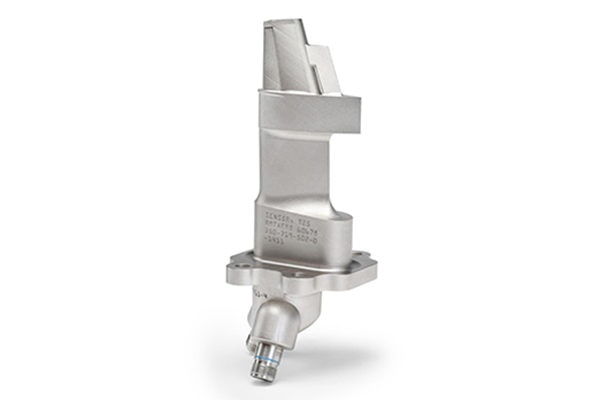3-D Printed Parts on Airplanes Are Just the Beginning of a Movement
Share

A record-breaking number of 1,000 aircraft parts were 3-D printed out of plastic allowing Airbus to cut production time and make the deadline on the delivery of their first Airbus A350 XWB that launched with Qatar Airways in December 2014. Instead of milling the parts from metal, Stratasys Additive Manufacturing forged them out of ULTEM„¢ 9085, a FST (flame, smoke and toxicity) compliant resin that is certified to an Airbus material specification.
“Our additive manufacturing solutions can produce complex parts on-demand, ensuring on-time delivery while streamlining supply chains,” said Dan Yalon, executive vice-president, Business Development, Marketing and Vertical Solutions for Stratasys in an announcement released earlier this week.
Previously holding the record was Boeing with 30 parts in 2013. The aircraft manufacturer was an early adopter of 3-D printing technology and had produced more than 20,000 printed parts. However, only 30 of them, used for air ducts and hinges, were installed in the Boeing 787 Dreamliner. The other parts were distributed among 10 military jets.
To produce the 3-D printed parts, both Boeing and Airbus turned to Stratsys, a company based in Rehovot, Israel and Minneapolis, Minnesota that manufactures orthodontic appliances, human prosthetics, automobile parts, defense arms and film props out of resin. Resin is ideal for rapid prototyping and is especially cost-effective in small-scale manufacturing of replacement parts. “Instead of storing parts at their various hubs, or requiring parts to be shipped to them, possibly causing extensive delays, the company could just pull up a specific file for a part that’s needed, and have it fabricated within minutes or hours wherever they have a printer available,” writes Brian Krassenstein.
A 2013 report by PricewaterhouseCoopers (PwC), 3D printing: A potential game changer for aerospace and defense, also finds that the technology has the ability to create “complex parts without regard to geometric complexity, [which] opens up new frontiers for design flexibility and optimization.” SABIC, the Saudi-based company that won a Crystal Cabin Award at this year’s Aircraft Interiors Expo for its light-transmitting LEXAN„¢ thermoplastic sheets demonstrated this with a sleek, lightweight and attractive modular airline seat that was printed with less than 15 parts.
Boeing has also leveraged this quality. “We aren’t limiting ourselves to the 3-D printer sizes. Right now we’re looking at repairing very large structures such as valves and casings, containers. We’re also looking at being able to prototype and make tools very quickly for our factories so that we can try new ideas faster,” explains Christine Furstoss, global technology director for GE, in an interview with Bloomberg Business,

Last month Boeing and GE produced a 3-D printed metal casing for the T5 compressor inlet temperature sensor that is used in GE9X engines and found in Boeing 777s. It’s a piece of cobalt chrome alloy about the size of a grapefruit that started as a computer-aided design file and through the melting and fusing of metal beads by an electro beam laser, became the first 3-D printed part to be certified by the US Federal Aviation Administration (FAA) for use in a commercial jet engine.
But, turning dust into metal is not cheap. PwC reports that laser-melting machines cost from hundreds of thousands to millions of dollars. Thousands of metal beads are required to “grow” a form layer by layer and the process can take hours, or even days, just to produce a single part. And additional costs and equipment may be required to finish the 3-D printed object.
On the other hand, as speed and quality of the technology improves, 3-D printing will become more accessible. The prospects are promising as companies like General Electric, Ford, Nike, Hasbro and Hershey’s have already jumped onboard.
“This technology – 3-D printing and new design rules – really helps us to reduce the weight, which is the biggest issue in aircraft design because it’s directly linked to greenhouse gas emissions,” said Brian Schaefer, a mechanical engineer and, manager, Cabin and Cargo Innovation when he presented Airbus’ Concept Cabin that relies heavily on 3-D printing at a 2013 TED Talk. A slide shows that a 3-D printed aircraft part can weigh half the amount of its milled counterpart.
From 30 to 1,000 3-D printed parts on a commercial aircraft in less than two years, it would seem that part by part, the airline industry is propelling into a 3-D revolution.





